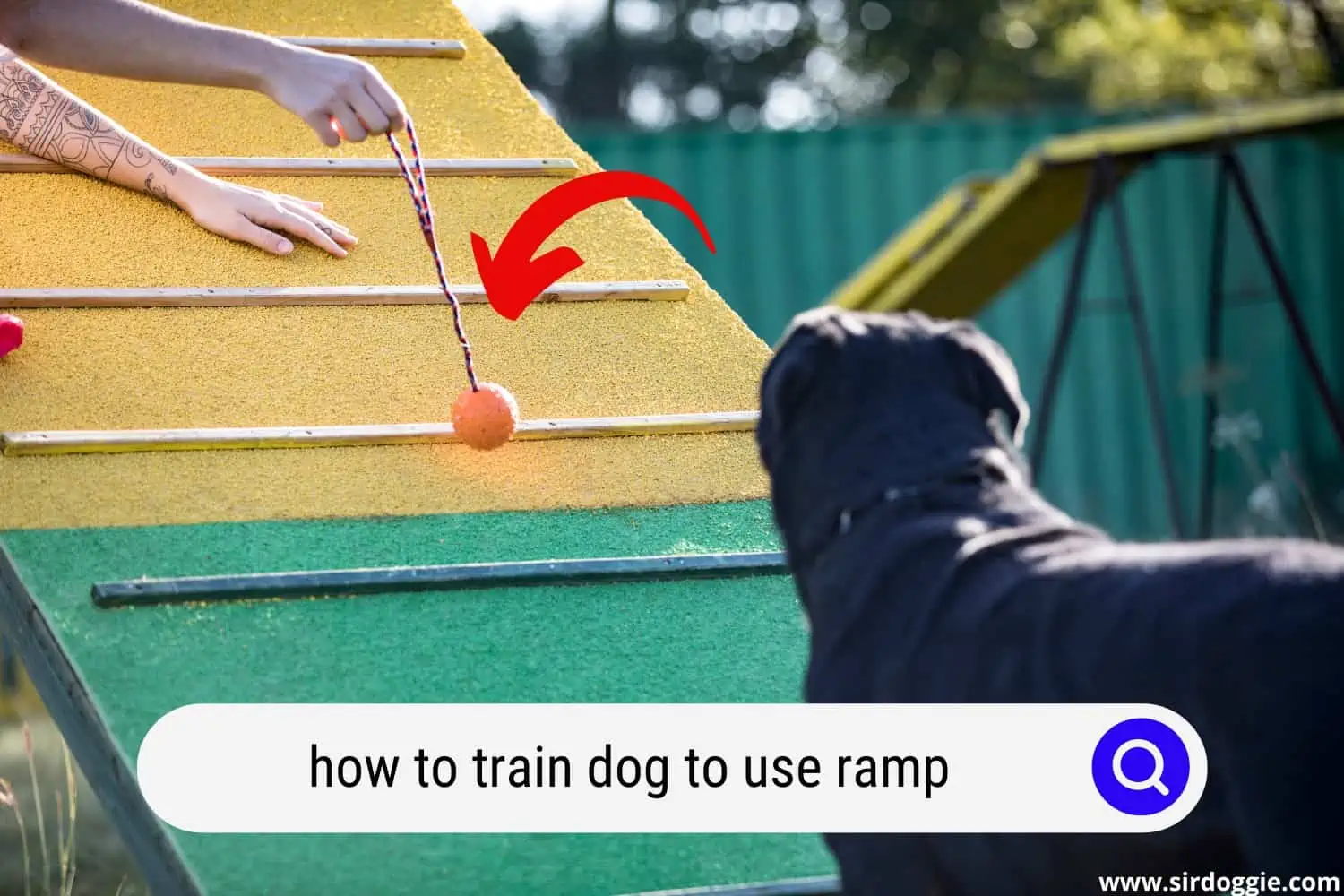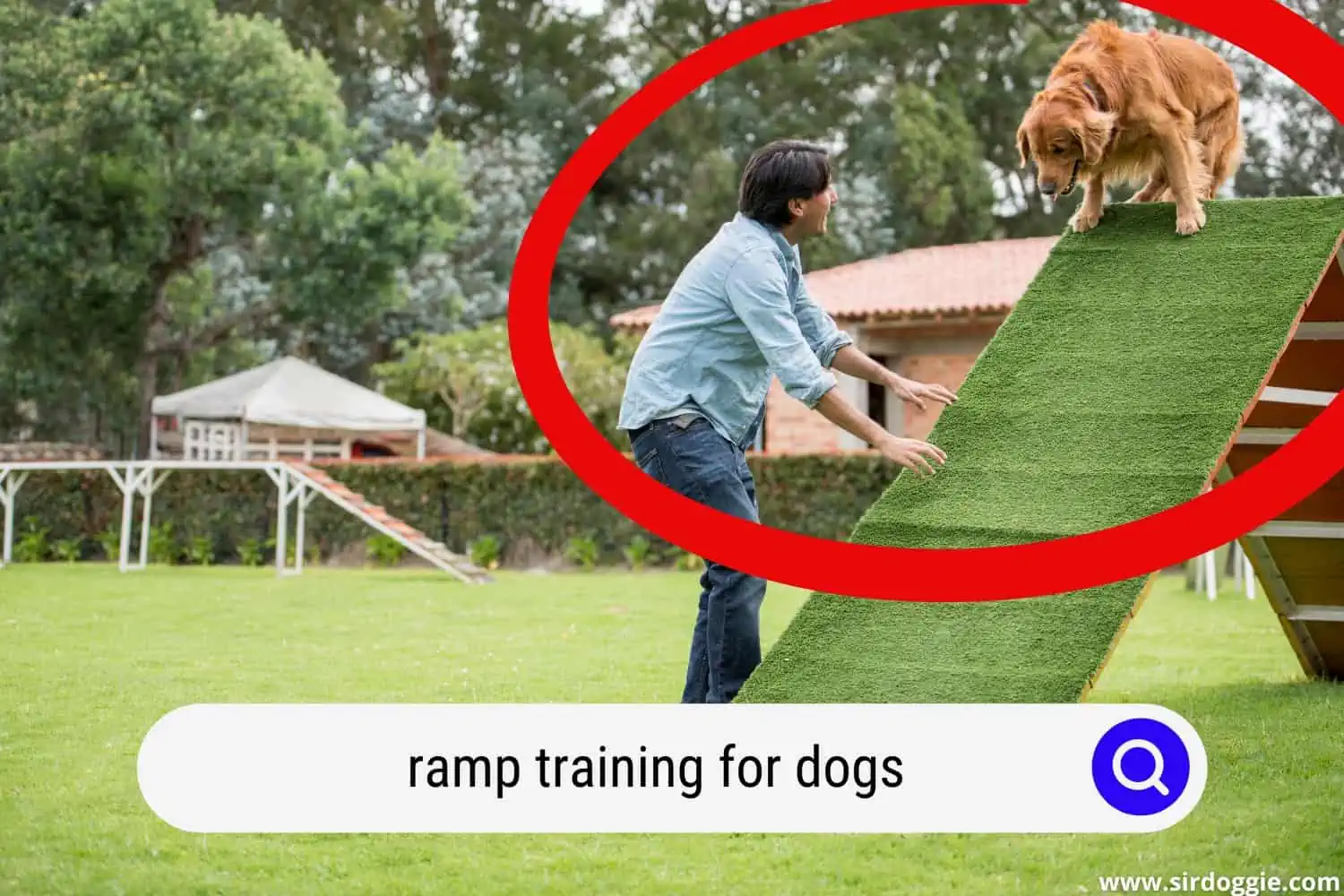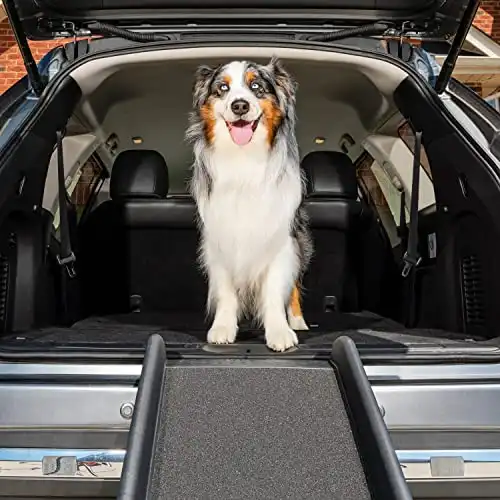Ramp Training For Dogs Made Easy With These 4 Tips
There are plenty of good reasons to want your dog to learn to use a ramp. Factors like age, health, and size all factor into the decision to introduce a ramp into one or more areas of your dog’s routine.

While some dogs are more adventurous than others, it should be easy to get your doggie comfortable with the idea by using a combination of smart planning and time-tested training.
How do you train your dog to use a ramp? Here are 4 quick and easy tips:
- Introduce the Ramp
- Familiarize Your Dog with the Ramp
- Use Rewards and Treats
- Normalize the Ramp
You probably don’t have to think about walking very much when you go about your normal routine. What if you were stepping out onto a tightrope, descending a steep or slippery slope, or crossing an unsteady rope bridge?
Just like us, our hounds have to think twice about how to stay safe when they’re navigating unfamiliar and uncertain terrain. Make the job easier on them and then make the training fun.

Related Reading: DIY Dog Ramp for an SUV & DIYDog Ramp for a Pontoon Boat
Training Your Dog to Use A Ramp
Once you’ve laid the groundwork for successful training by finding a ramp that fits your doggie and their needs, training them should be as easy as sitting, staying, or fetching!
The goal is to make your dog comfortable with the ramp. To do this, you need to introduce it in a way that doesn’t make them afraid and work gradually toward the point where they walk up and down without giving it a second thought.
There are several different approaches, but each one just emphasizes a different step of the same basic process.
To get started, your going to need your ramp, your dog, a leash, plenty of treats, and some time and patience.
- Introduce the Ramp: Before you try to use the ramp with a vehicle or furniture or even get your dog to walk on it, just lay in out on the floor of your home or the ground in your yard. Give your dog a chance to investigate the ramp at their own pace and wait for them to demonstrate a level of comfort with it.
- Familiarize Your Dog with the Ramp: Some people prefer to have their dog walk across the ramp while it is still laying flat. Others use blocks to start their dog off at a shallower incline and gradually increase it. Some people go straight from the floor of their home to the back hatch of their SUV. Listen and watch to gauge your dog’s feedback and adjust as necessary.
- Use Rewards and Treats: It’s important to let your dog decide for themselves that they are going to do what you’re asking them to do. When they do, reward them with treats and praise. Whether you start with a flat ramp or go straight to using it as you intend to, pay attention to any signs that your dog is fearful and take steps to make them comfortable.
- Normalize the Ramp: Once your dog is using the ramp confidently, you can start to reduce the frequency of treats. You can also begin to focus on getting your dog to use the ramp in response to a verbal command without your direct assistance.
Reasons for Needing a Dog Ramp
A dog’s size, age, health, and even breed can factor into the decision to begin using a ramp to help them access certain spaces.
Some trainers and pet advocates recommend training your dog to use a ramp when they are still a puppy and easy to train so that they’ll be comfortable with them throughout their lives.
For small breeds, even a dog in the prime of his or her life can have trouble jumping up onto furniture or into cars. Fortunately, giving them a lift is usually the easiest solution to this problem.
But what if you want your dog to be able to get up and down from the bed or couch while you’re away? What if your health problems mean that you can no longer give them the boost they need?
Larger breeds run into problems as they get older. They no longer have the spring in their step that it takes to get into or out of your vehicle but they’re too big for you to safely lift.
Any dog can need the use of a ramp if they’re recovering from surgery or an injury. Breeds with long backs should be discouraged from jumping to make sure they don’t injure themselves or develop a chronic health issue.
No matter the reason for choosing to introduce a ramp into your dog’s life, it’s important that you think about the particulars to come up with a plan for buying or building a ramp that your dog will trust and be comfortable using.
That’s the easiest way to lay a foundation for successfully training them to use the ramp.
What to Look for in a Dog Ramp
There are a lot of great options on the market for dog ramps and steps. There are just as many options for designing a customized solution that you build yourself.
Whether you prefer to spend a little more to save yourself some time or invest some time to save some money—there are some basic elements to consider when you’re shopping for or designing a dog ramp.
Some of the links in this post are affiliate, and we may earn a commission.
Will you be using the ramp for vehicles or with furniture in your home? A travel ramp should work with your vehicle to provide your pooch with a safe and stable way to get in and out and then fold away to fit easily in the vehicle while you’re on the road.
A ramp to access furniture is a more permanent fixture, and you can consider how it will look in your room in addition to its functionality.
A dog ramp shouldn’t be too steep to make going up or down safe, easy, and comfortable for your pooch.
Some travel ramps not only fold up for easier storage but also telescope to make it easy to adjust for the height of your vehicle and adapt to the terrain surrounding your parking spot.
It’s just as important to ensure that the ramp you buy or build is stable and sturdy so that your pup trusts it when they walk up or down.
You should look for a ramp with a walking surface that is wide enough, and that offers a slip-resistant texture. In some instances, side rails might be an important addition to your ramp—especially for older dogs that might be struggling with vision challenges.
More Dog Training Options
If you’re a new or seasoned pet parent to a puppy or adult doggie, or you’re just wanting to learn some new skills, I recommend embarking on some sort of training. Professional training, however, can be quite expensive and time-consuming.
I really like this training course (opens a new tab). It’s online, it was created and updated by a professional dog trainer and it really helps you understand how to better stimulate and enrich your puppy’s (or dog’s) life.

Conclusion
Whether you use a ramp as part of your dog’s normal routine throughout their life or introduce one in response to a particular need, it can be an important part of keeping your pooch involved in your life.
By finding the right ramp for the job and following reliable training, you can get your dog to comfortably and confidently use a ramp wherever and whenever you need them to.
The ramp you choose is almost as important as how you approach training your dog to use the ramp. If the ramp is poorly constructed or poorly suited to the uses you make of it, your dog will have good reasons to feel uncomfortable using it.
When you find the right ramp for your needs, teaching your pooch to use it will be just like any other training activity.
And don’t forget, ramps are an excellent way to reduce wear and tear on your doggie’s joints. If they’re constantly going in and out of the car then a ramp can have a profound impact on their overall health, well-being, and longevity.

Family Dog Expert Author
Hi there! I’m Stuart, a devoted dog lover and family dog expert with over a decade of experience working with our furry companions. My passion for dogs drives me to share my knowledge and expertise, helping families build strong, loving bonds with their four-legged friends. When I’m not writing for SirDoggie, you’ll find me hiking, playing with my beautiful dog, or studying music.
